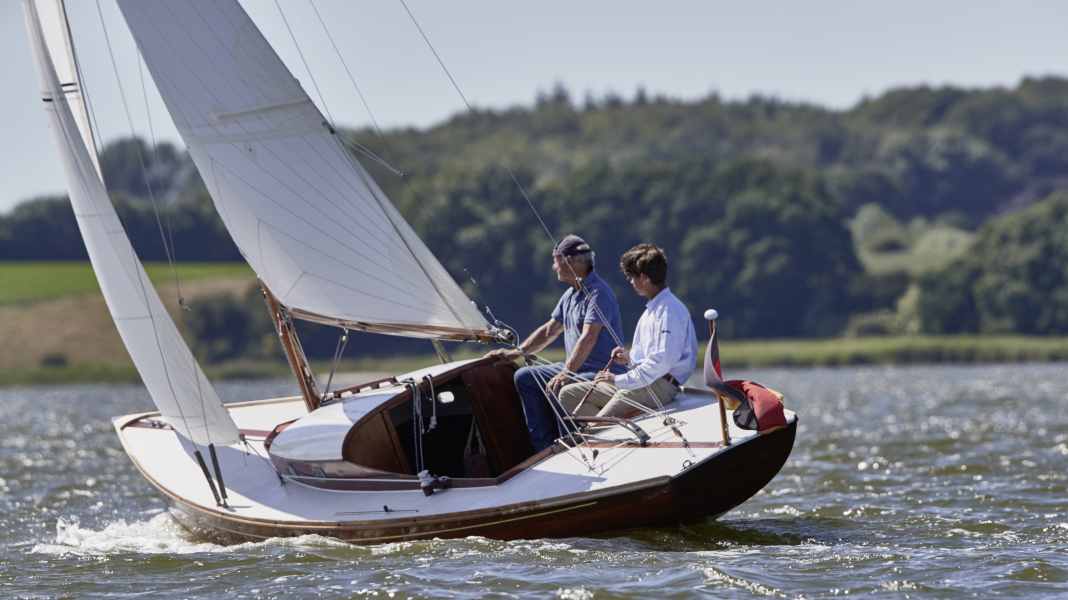
In a loose series, we therefore address the most frequently asked questions - and misunderstandings - about yacht insurance. In the first instalment, with the help of Dirk Hilcken from the leading boat insurance broker Pantaenius yacht insurance the fundamental Sense and purpose of a liability and comprehensive policy for the ship.
The second episode was all about the question, how high a ship should be secured. Especially if you buy a second-hand boat. This immediately raises another question, which should now be answered here: What about old ships or those made of wood? Are they insurable at all? And if so, what should you look out for?
Dirk Hilcken explains:
Our harbours are full of GRP boats that have been in use for several decades. Classic wooden boats sometimes even have a whole century behind them. However, this age says little in general about the state of care and equipment. However, these factors are decisive when it comes to choosing the right insurance. So the answer is: in principle, yes. Even old boats or classics can be insured regularly with liability and hull insurance.
Of course, there are also certain criteria to consider here. The condition of the boat must be known to the insurer, the scope of the policy must match the insured boat and the premium must be in reasonable proportion to the insured value.
High risk of total economic loss
The used boat market is volatile. Anyone who has been really successful in the bargain hunt could be told by their insurance company that hull insurance with a fixed rate and reimbursement of partial damage based on the principle of new for old cannot be offered for the boat. This is usually due to the ratio of boat size to insured value.
Just imagine having to replace a rig or repair complex damage to the hull of your boat. The cost of this is hardly affected by the age of the boat. A new mast costs what a new mast costs, and the hourly rate of a boat builder or painter is not based on the age of the boat.
With relatively inexpensive boats, even partial damage can quickly mean a total economic loss. With a corresponding policy, the policyholder would pay a relatively high premium in case of doubt and yet may only receive the agreed sum insured, but not the more expensive costs of repairing the damage.
Total loss or current value cover as a more favourable alternative
If the insurance company is to reimburse partial damage and do so without deductions, a certain ratio between size and value must be maintained for the insurance provider. If there is no plausible way to insure the boat for more money than was actually paid, total loss or current value cover may offer a remedy.
Total loss cover does not cover partial damage. The premium is somewhat more favourable and owners who repair minor damage themselves can be sure that their investment will be replaced in the event of theft or total loss due to fire, for example. Although comprehensive insurance based on current value covers partial damage, it makes deductions that increase with age. The principle is similar to that of comprehensive motor vehicle insurance. Here too, in the event of a total loss, deductions are made on the basis of age and wear and tear.
More about boat insurance:
- Break-in, collision, accident: Checklist for the correct procedure
- What to do in the event of damage? Prevention, mitigation, settlement
- The right policy for everyone: 7 sailor types at a glance
- Attention, trap! How to read the small print
- Legal advice: The most important answers in the interview
- Contract types: What policies are available
The ravages of time stop at nothing. I'm not talking about the feeling when the old cutter of your youth suddenly seems rather uncomfortable, contrary to romanticised memories. It's about material fatigue. This has a tangible effect on the safety of certain wearing parts on board and, depending on the design, on the boat as a whole.
Expert opinion required
Metal hulls, for example, become thinner and thinner over time. Corrosion can be slowed down and its consequences can be remedied by regular maintenance intervals. However, there is no such boat that will not be affected sooner or later.
In order for an insurer to get an accurate picture of the condition of a metal hull, an acoustic report is usually required. When this should be done for the first time depends heavily on the area of operation, the type of construction and the usage. However, 30 years is a common rule of thumb. If the report is favourable or appropriate repairs are ordered, an older boat with a metal hull can also be insured under the same conditions as a GRP boat.
Wood has proven itself as a material
The second major construction site is for boats made of wood. It is actually the material par excellence and has proven itself over thousands of years. Nevertheless, it is very high-maintenance and potentially dangerous for everyone on board if it is rotten or decaying. After thirty years, most insurers therefore require an assessment of the condition by experts such as boat builders or professional surveyors.
In most cases, this is not an obstacle for a well-maintained classic. This is where insurance with a fixed valuation and new for old settlement pays off. After all, determining the current value of a 100-year-old boat in the event of a claim does not seem very plausible.
Maintenance and equipment condition are decisive factors for old boats
If boats are in a good state of maintenance and equipment, age or hull material are generally not an obstacle to insurance. In the case of wooden or metal hulls, however, the proper condition must be proven after a certain age. For particularly well-maintained classic boats, however, it is advisable to take out all-round cover anyway, which fully covers the costly repair costs in the event of partial damage and enables the replacement of an equivalent boat in the event of a total loss.
For cases in which the purchase price or market value has fallen to such an extent that even more complex partial damage means a total economic loss, there is total loss insurance or comprehensive insurance based on the current value.
The expert:

